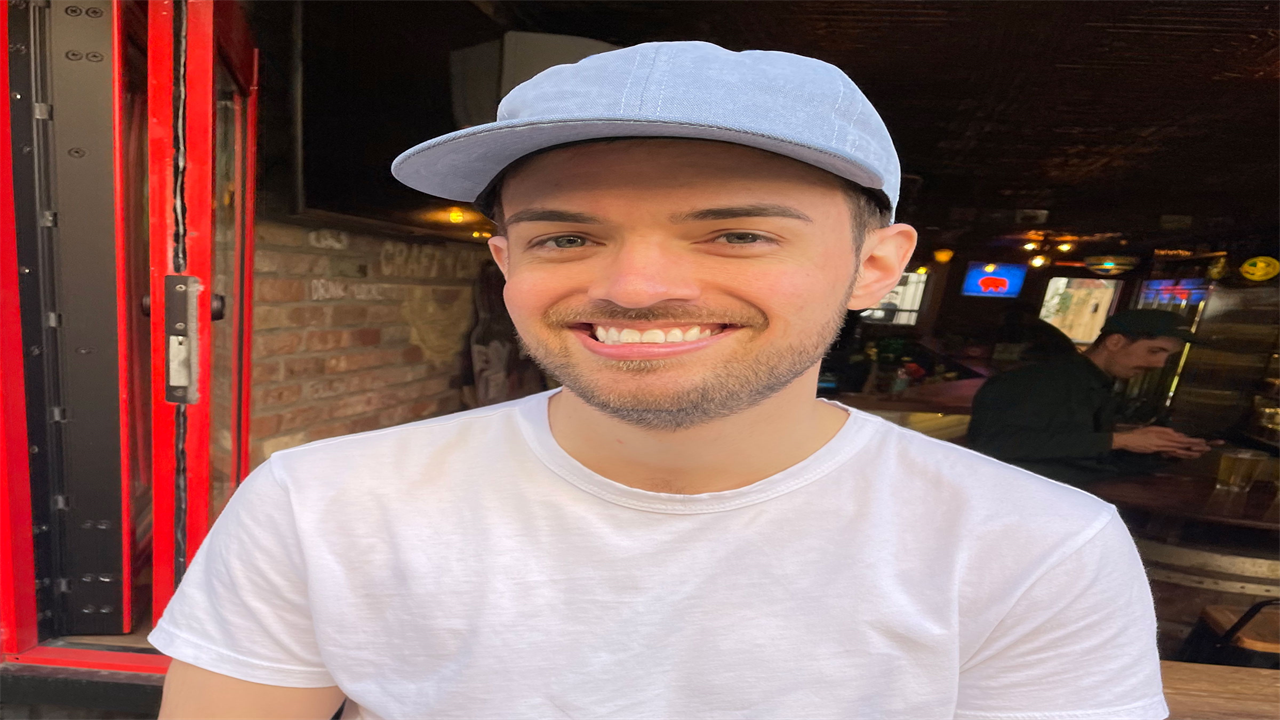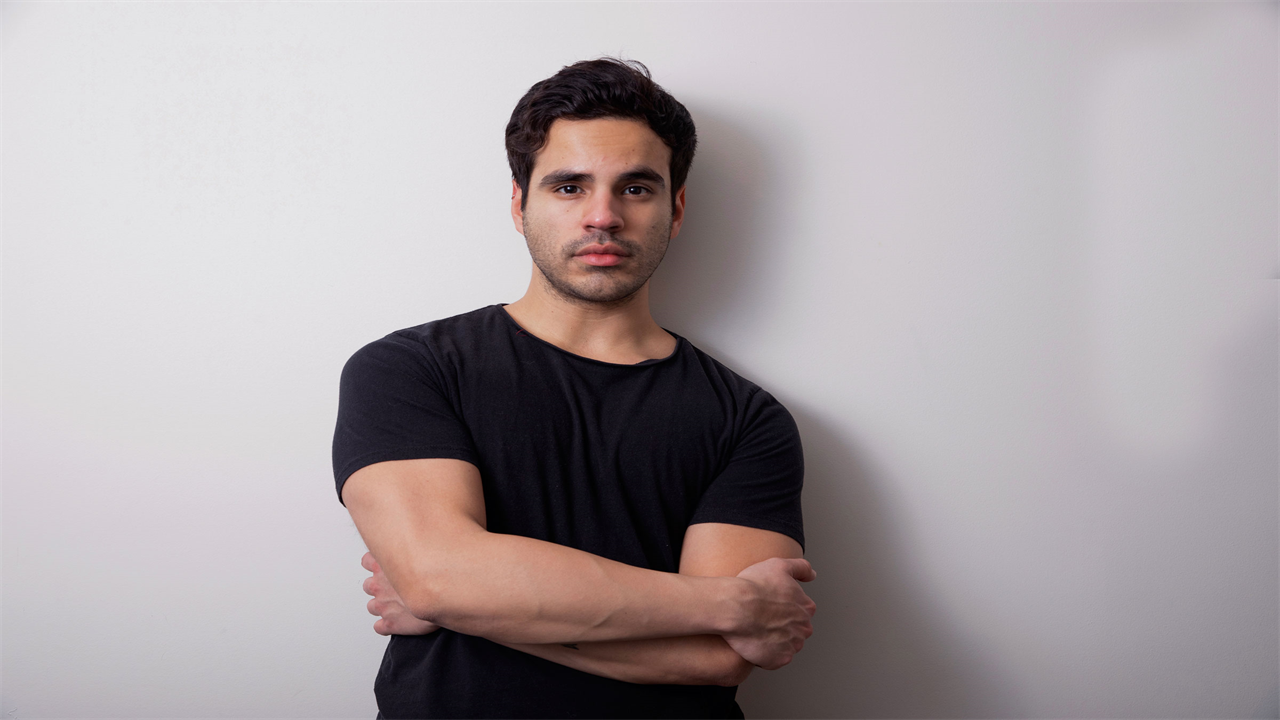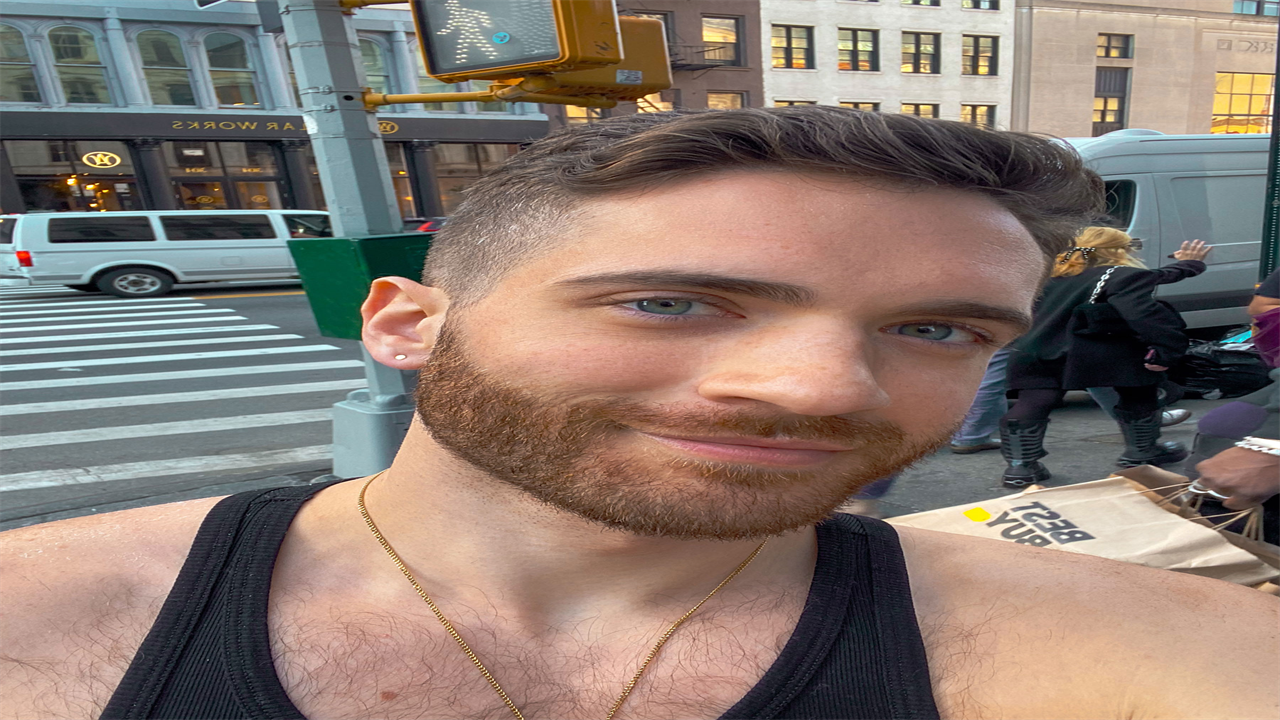What It Really Feels Like to Have Monkeypox
0 View
Share this Video
- Publish Date:
- 9 August, 2022
- Category:
- Diet
- Video License
- Standard License
- Imported From:
- Youtube
Tags
Since the global monkeypox outbreak began in May 2022, more than 22,000 cases have been confirmed in countries around the world. More than 5,000 of those cases have been recorded in the U.S., with many clustered in hotspots including New York and California. The virus, which often results in a blister-like rash and spreads through close contact, has so far predominantly affected men who have sex with men.
Even as cases tick up and monkeypox gains public attention, however, it can still be difficult to find information about testing, treatment, and vaccines. Many people who fear they are at risk or infected are left to seek answers on their own. [time-brightcove not-tgx=”true”]
Three people who have had monkeypox spoke with TIME about their experience. They described it as both a physically and mentally difficult disease, one that caused stigma, confusion, and pain. “It was terrifying,” said Matthew Cancel, a publicist in New York City. “I really was in it alone.” Each shared their story in hopes of helping others.
Luke Brown, age 29
Project manager at a technology company; New York City

Courtesy of Luke Brown
Surviving monkeypox has turned Brown into an activist, and he now tries to help other people avoid the physical and bureaucratic torment that comes with having the disease. But first, he experienced all of that himself.
My friends and I in the gay community in New York are a pretty health-conscious bunch. We’re always tracking the health news, and in May we heard that there had been a meningitis outbreak in the gay community in Florida and decided we should all go get our meningitis boosters, which we did. Then we heard that there’s this weird monkeypox thing happening in Europe, and we looked into getting a smallpox vaccine [which also helps prevent monkeypox], but you can’t really get it unless you’re in the military or you’re going to do some sort of risky travel.
When eligibility opened up to our community in July, my friends and I began trying to get a vaccine appointment through the confusing and unreliable New York City Department of Health website. Finally I got a text from a friend saying “Here’s a link where doses are available right now.” Frantically I tapped through the complicated website from my phone and was relieved to snatch up a vaccine at last, on July 9.
Meantime, all of my friends and I were saying, “Hey guys, I know the vaccine is super scarce, but one thing we can all be doing is twice daily skin scans. It’s free and you can do it at home, and the worst thing that’s going to happen is that you’re going to find a mole that you should have a doctor look at.” So on July 10—just 26 hours after my vaccine—I did a skin scan and noticed my first lesion. By the next morning, I was in my doctor’s office and had them sample the lesion. I waited two days for the result, during which I developed the other symptoms of monkeypox: fever, body aches, chills, and sweats. A few days later, on July 14, I got the positive results from the monkeypox test. And then, boom, right after that, I had a second burst of lesions—like stars in the sky—all over my body.
For the next few days, I was in excruciating pain—the worst pain of my life. I’ve been in a car wreck. I’ve had sinus surgery four times. I’ve had wisdom teeth out. I’ve had COVID-19 and mono. I’ve broken my hand, and the pain was nothing like this. Doctors put me on gabapentin [a medication used to treat pain from shingles], and I was also on ibuprofen and acetaminophen, but nothing even dented the pain.
Throughout this period, I was trying to get TPOXX. I talked to my doctor and he couldn’t prescribe it, because at the time, primary care providers were required to submit a request to the local Department of Health for approval to prescribe the drug, and the DOH in turn would approve or deny the request. [Note: TPOXX is considered an investigational new drug, which requires multiple forms, patient samples, and even photos of lesions before it could be prescribed. As of July 22, the U.S. Centers for Disease Control and Prevention (CDC) has made it easier for clinicians to prescribe TPOXX, removing some of these hurdles.]
Finally, just as a shot in the dark, I posted a story to Instagram with a desperate plea asking if anyone knew how to get access to TPOXX. If there’s one thing gay men don’t get enough credit for, it’s looking out for each other, and I got a text from a friend saying, “Hey, I’ve got a friend who knows a doctor who might be prescribing this stuff.” Two hours later, I got a call from the doctor’s office, an infectious disease specialist. He scheduled me for a virtual video visit the next day, and I had TPOXX couriered to my address that day.
Now I’m very much on the mend. The CDC says you have to wait until all lesions have fully healed and new skin has grown before you’re not contagious. So I mostly don’t go into public places—and when I do, I’m masked and don’t touch anything.
In the meantime, I’ve been spending time putting together a Google doc to share with other people trying to navigate the TPOXX labyrinth, explaining what that drug does, what it doesn’t do, and how you get it. I feel like going back in time and helping myself—helping the people who don’t have these answers. I want to be the resource that I wish had been there for me.
—As told to Jeffrey Kluger
Matthew Cancel, age 27
Publicist; New York City

Courtesy of Matthew Cancel
After learning in June that monkeypox was spreading in New York City, particularly among men who have sex with men, Cancel (who identifies as gay) called his doctors, the city’s health department, and local urgent-care clinics and emergency rooms in search of a vaccine. No one he spoke with knew how or if he could get vaccinated. Then, in July, Cancel began experiencing symptoms.
I was away for the weekend, and when I came back I felt unwell. My lymph nodes were swollen, and I had a headache and fever. I thought, “Maybe it’s a cold. Maybe I’m exhausted. Maybe I’ve been traveling too much. Maybe it’s COVID.” But I was also like, “Let me call about that monkeypox vaccine again.” Not only did I hit dead ends, I had people hang up on me. I also got very little information about where to find testing.
Then bumps started appearing on my skin. I FaceTimed my primary care physician, who said they were bug bites and I shouldn’t worry. The next day when I woke up, some of the sores had started to blister. A bunch more started appearing. They were itchy, painful, and getting big. I was like, ‘“Okay, this is monkeypox.” I don’t know exactly where I caught it, but I’d been at Pride events in close proximity to a lot of people.
I called my PCP’s office again and connected with a nurse practitioner. She was lovely and kind, but she was upfront that she had no idea what she was doing and no one had given her guidance about monkeypox. It was terrifying. I texted a friend who has a degree in public health while I was on the phone with the nurse practitioner. He said I should get on antivirals right away. The nurse practitioner didn’t prescribe tecovirimat [known as TPOXX], an antiviral that can be used to treat monkeypox, because it’s only available through the Strategic National Stockpile. She said, “It’s going to be a really crazy process to get it, and I want to get you on antivirals today,” so she ended up prescribing an antiviral called acyclovir that’s used for herpes viruses. [Note: The CDC does not include acyclovir in its monkeypox treatment recommendations for health care professionals. Some research suggests acyclovir is not effective against poxviruses, though Cancel says it seemed to help relieve his symptoms.]
I still wanted to be physically seen by a doctor, so I went to an urgent care clinic. I told them I had monkeypox, and they told me to go home. They said there was no doctor there who could help me. I really was in it alone. I hope my PCP contacted the health department so my case was counted, but I’ve kind of given up on calling people, so I didn’t try to report it myself. I took matters into my own hands.
After doing some research on the internet, I’ve been running a bath every single day with Epsom salts, table salt, and baking soda and sitting in it for 30 minutes. It really relieves the itching and pain and it starts to dry out the sores.
After a few days of being sick, I decided I needed to do something. I knew I couldn’t be the only one suffering in silence and very confused about what’s going on. I put my entire story on Instagram. First, it was just an influx of support; then, it was people saying, “I had no idea this was happening.” I had people who are currently infected saying, “I have been suffering alone.” Then I had people messaging me, asking if they could send me pictures of their sores because they couldn’t get a diagnosis.
I was shocked. I’m a publicist! I went to school for communications! I am not a health care professional. That’s when I realized this is a huge, huge problem. Men who have sex with men have been mostly affected so far, but gay and straight people don’t live in silos. If we don’t get this contained, it’s going to get even worse.
—As told to Jamie Ducharme
Matt Ford, age 30
ctor, writer, and video producer; New York and Los Angeles
Courtesy of Matt Ford
Ford first spoke out about his monkeypox experience in a TikTok video that has since garnered more than 1 million views.
I had seen online reports about monkeypox in May and early June, so I knew that it existed, and I knew there was an outbreak in the U.K. that was potentially spreading to the U.S. But I didn’t take it seriously as anything that would immediately affect me. It seemed like this thing out in the ether that would maybe be something to be concerned about at some point in time. Obviously, that changed very quickly.
On June 17, I got a call from someone I’d been hanging out with the weekend prior, who I had prolonged skin-to-skin contact with. He told me he was 99% sure that he had monkeypox. He was waiting on the confirmed results, but wanted to let me know because I’d been exposed. I was shocked and worried—and immediately felt like I needed to do a bunch of research on it. I was also super bummed, because I knew from one Google search that recovery time included isolating for two to four weeks, and I had been planning to attend New York Pride and had Fourth of July plans. In an instant, it wiped out three weeks of plans.
I was in touch with the Los Angeles County Department of Public Health right away because they were doing contact-tracing. The next day I hopped on a video chat with my medical provider, and the earliest appointment I could get near me for testing was three days later. In the meantime, I voluntarily went into isolation because I figured I had it. By the time I got tested, I had lesions on my body, and some had popped up on my face. They swabbed two different areas, and four days later, it was a confirmed positive result.
The lesions I had looked just like what we see in the CDC pictures for this specific outbreak. I also quickly developed flu-like symptoms: a fever, sore throat, cough, and full-body chills—I was sweating through my sheets at night. It was miserable.
Even as the flu-like symptoms abated, more lesions appeared all over my body, and they continued to appear more than 10 days into the infection. I counted more than 25 in total, and they were all over: some in more sensitive underwear areas; multiple lesions on my arms and legs; one on my scalp; three on my face. Most of them were itchy and irritating, but the ones in more sensitive areas were excruciatingly painful, and the only thing that helped was taking Epsom salt baths. It was constant pain, and for a few nights, I wasn’t able to sleep at all. After a couple nights, I went back to the doctor and was prescribed Tramadol, a narcotic painkiller that helps some people sleep better, and even that barely helped. I was not aware of any antivirals early on, and I was not able to get them. So it was just managing symptoms for me.
In addition to the physical pain, isolation was pretty grueling. Around two weeks in—the Fourth of July—it got tough. I was getting stir-crazy in my room, and all my friends were out doing fun stuff for the holiday. But I had tons of friends and acquaintances sending me sweet messages and wishing me a quick recovery. When you’re going through this, you’re going through a lot of shit—it’s a dark mental period. So to get a care package, or flowers, or some sweet token from a friend—it really did mean a lot.
Now, more than a month after I was diagnosed, I’m basically back to baseline. But there are still some lingering mental and physical repercussions. Even though the lesions are gone and I’m not contagious anymore, my body experienced trauma. There are mental-health effects that I’m seeing and discussing with other people who have also gone through it—it’s kind of jarring to reenter society and group settings. I experienced a good amount of social anxiety and social awkwardness at first.
From talking with doctors, I’m assuming that I have some level of immunity, at least for a little while. I hope it’s for life, but no one really knows. Regardless, I’m going to give it a couple of months, and then once there are plenty of vaccines to go around and supply isn’t an issue, I will definitely get vaccinated.
There’s this shame and stigma that come with monkeypox, and I want to emphasize that there is no reason for that. We’re seeing that it’s primarily affecting queer men, and unfortunately that’s happening at a time when the right wing is already attacking queer people, specifically gay men and trans people. But I want to reiterate to people who get it that they’ve done nothing wrong—it’s just the way the cards have fallen. And remember that it’s temporary: eventually, you’ll be on the other side.
—As told to Angela Haupt













